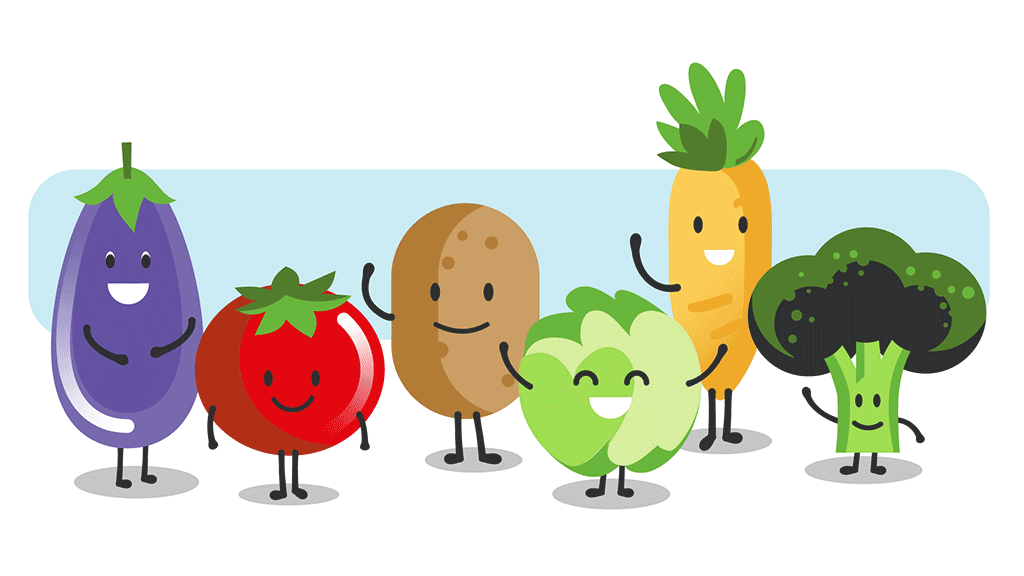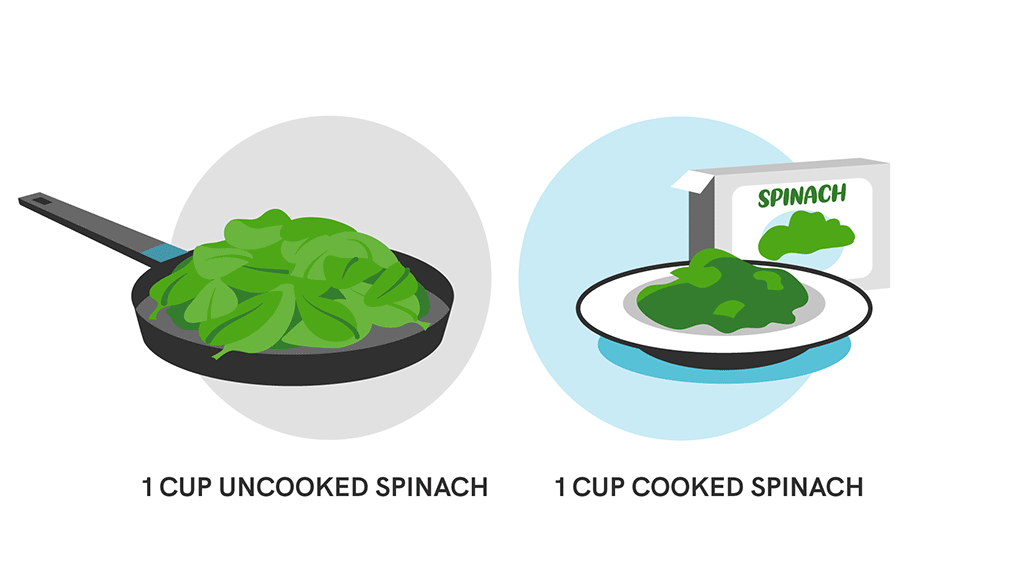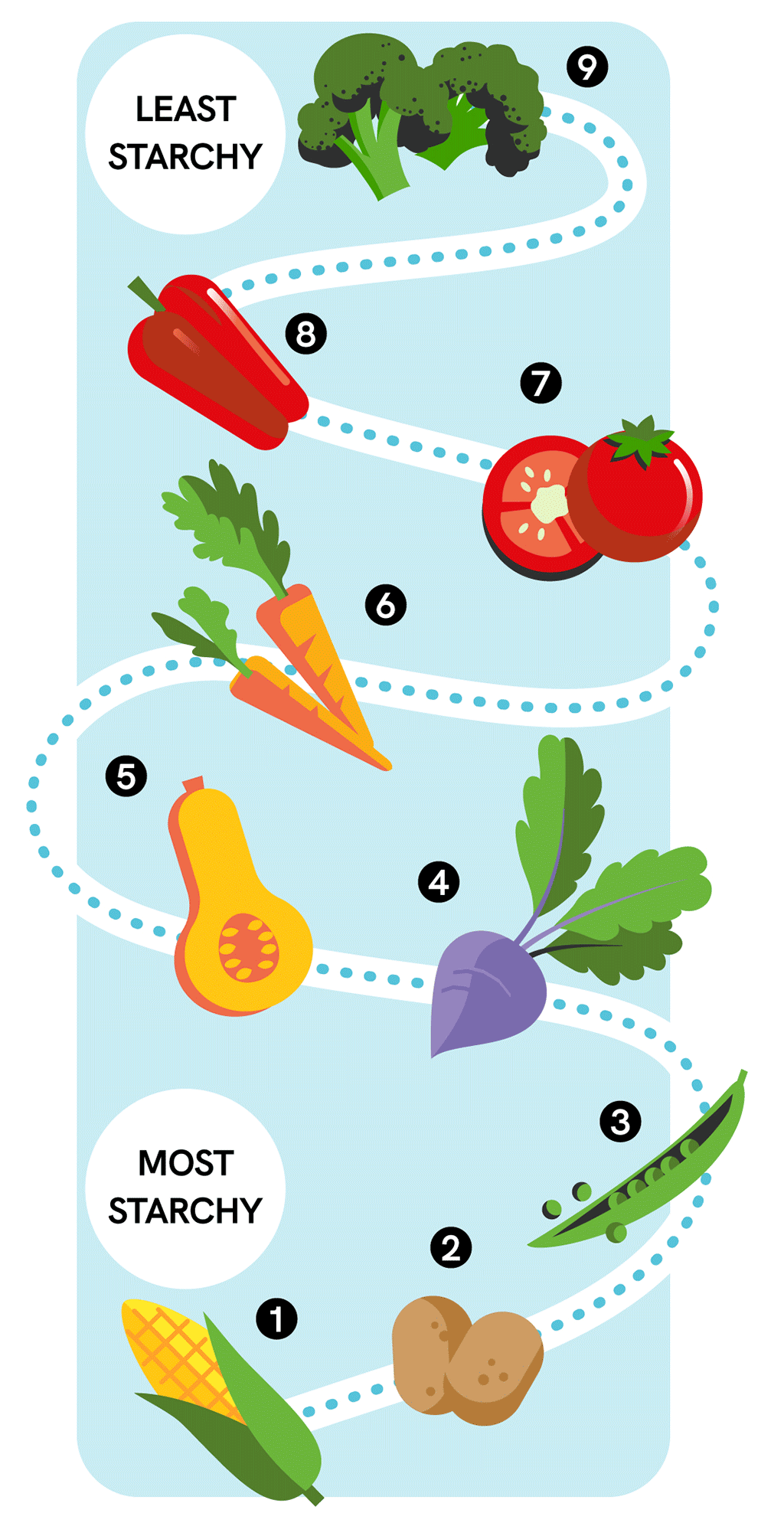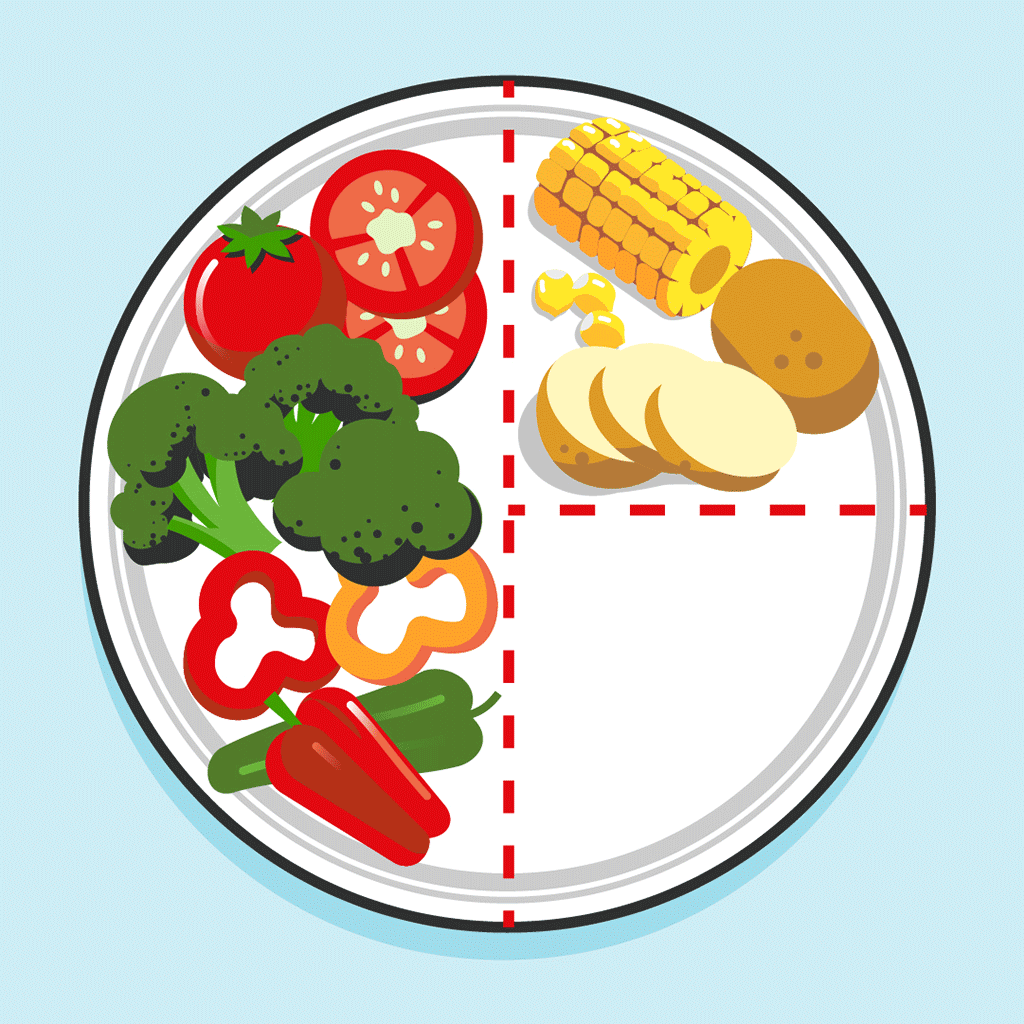Counting Carbohydrates in Vegetables
A diet rich in vegetables can lower blood pressure, reduce the risk of heart disease and stroke, prevent some types of cancer, lower risk of eye and digestive problems, and have a positive effect on blood sugar. All vegetables contain some carbohydrates.

Vegetables are categorized as starchy or non starchy.
Non Starchy Vegetables
In general, non starchy vegetables contain 5 grams of carb for 1 cup raw or ½ cup cooked. The difference in serving size is due to water loss when cooking. Think about how different raw spinach vs. cooked spinach looks. So, 2 cups of cooked spinach or 4 cups of fresh spinach is 20 grams of carbohydrates.

Starchy Vegetables
Starchy vegetables as their name implies have more starch, which means more carbohydrates, but they still have a lot of nutrients.

Starchy vegetables are all measured as cooked. In general, ½ cup cooked starchy vegetables is 15 grams of carb. Here is some examples of a serving size for 15 grams of carb:
- ½ cup corn, green peas, potato, or sweet potato
- ¾ cup pumpkin puree (canned without added sugar)
- 1 cup butternut squash
Starchy vegetables should take up around 25% of your plate, while non-starchy vegetables should take up at least 50% of your plate.

Leave a Reply